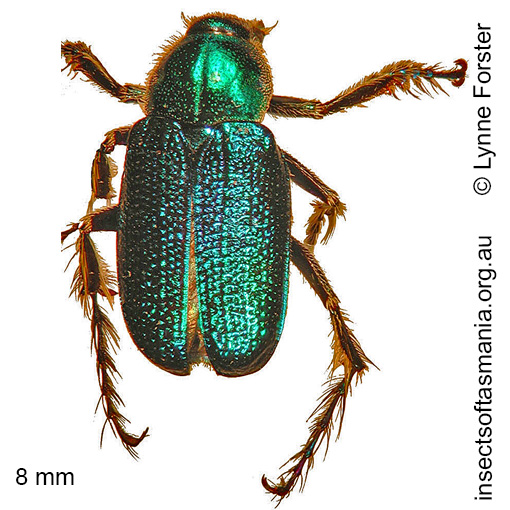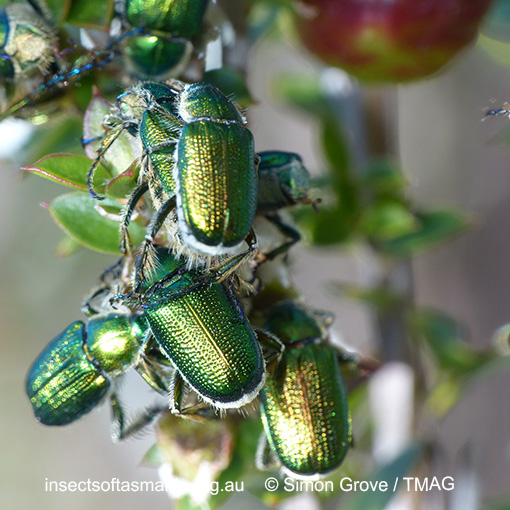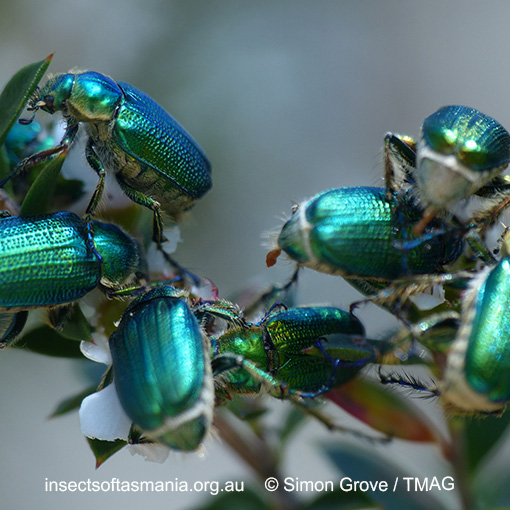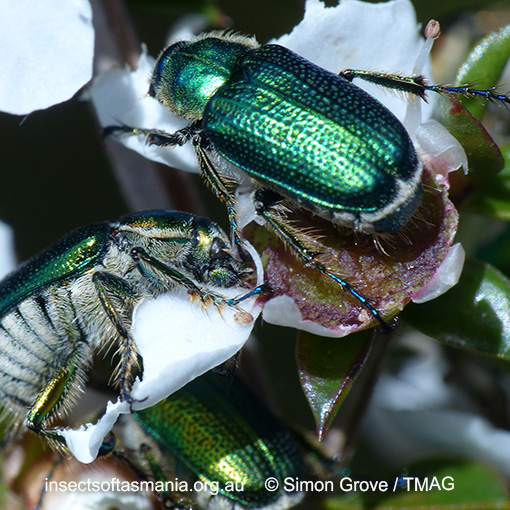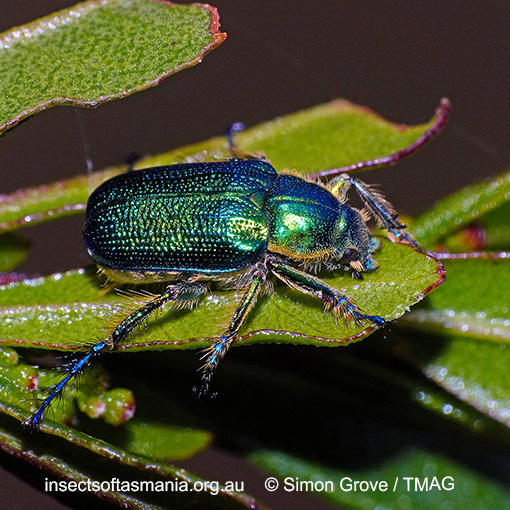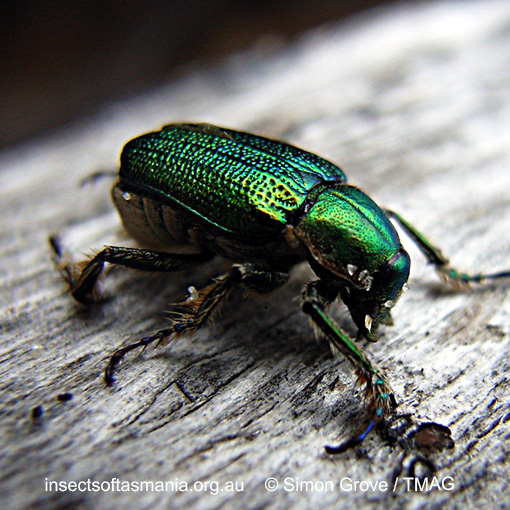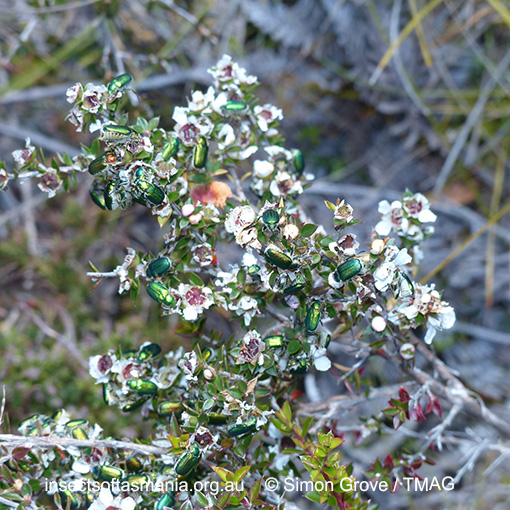
Diphucephala colaspidoides (a species of scarab-beetle)
Basis for Tasmanian occurrence
TMAG collections
Classification
Suborder: Polyphaga
Superfamily: Scarabaeoidea
Family: Scarabaeidae
Subfamily: Melolonthini
Tribe: Diphucephalini
Morphology
Flightedness: winged and assumed capable of flight
Ecology
Association with dead wood or old trees: not saproxylic
Ecological attributes: — Acacia dealbata is a host-plant (Bashford, 1990a) — Aotus ericoides is a host-plant (Bashford, 1990a) — Pseudotsuga menziesii is a host-plant (Bashford, 1990a) — Pultenaea juniperina is a host-plant (Bashford, 1990a) — Can inflict significant damage on Acacia spp. (Elliott & deLittle, 1985) — Can inflict significant damage on Eucalyptus spp. (Elliott & deLittle, 1985) — Can inflict significant damage on Nothofagus cunninghamii (Elliott & deLittle, 1985).
Collection method(s) for TMAG material: — Baited trapping (funnel trap) — Hand collection (substrate not specified) — Hand collection from Acacia dealbata — Hand collection from Cassinia sp. — Hand collection from Eucalyptus cordata — Hand collection from Eucalyptus regnans/viminalis — Hand collection from Eucalyptus regnans — Hand collection from Leptospermum scoparium — Hand collection from Rosa sp. — Rearing in insectary (host not documented).
Source ecological literature:
Bashford, R. (1990a). Tasmanian forest insects and their host plants: records from the Tasmanian Forestry Commission insect collection. Hobart: Tas. Forestry Commission, 32 pages.
Daley, E. (2007). Wings: an introduction to Tasmania’s winged insects. Hobart: 40 Degrees South Pty. Ltd., 236 pages.
Elliott, H.J. & deLittle, D.W. (1985). Insect pests of trees and timber in Tasmania. Hobart: Tas. Forestry Commission, 90 pages.
